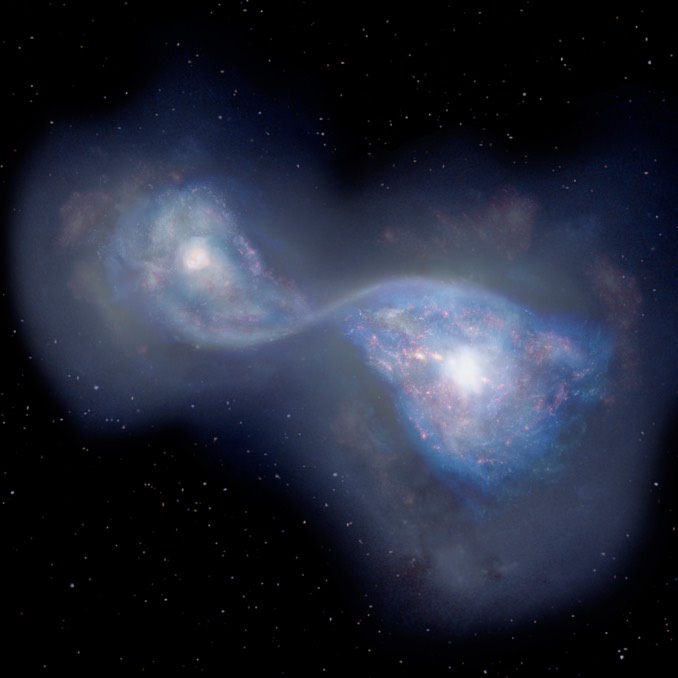
The Atacama Large Millimeter/submillimeter Array has spotted what appears to be two galaxies crashing together some 13 billion years ago, the earliest example of a galactic merger yet detected.
ALMA detected radio signals indicating the presence of oxygen, carbon and dust in the object, known as B14-65666 in the constellation Sextens, the earliest galactic detection of such signals. Data analysis indicates the radio missions were divided into two blob-like areas where the Hubble Space Telescope earlier revealed two star clusters.
The ALMA signals indicate the blobs are actually two galaxies moving at different speeds that are in the process of merging. The researchers estimate the total mass of the system at less than 10 percent of the Milky Way’s, reflecting the extreme youth of the components. Even so, B14-65666 is producing stars 100 times more actively than the Milky Way, yet another indicator that two galaxies are merging.

“With rich data from ALMA and HST, combined with advanced data analysis, we could put the pieces together to show that B14-65666 is a pair of merging galaxies in the earliest era of the universe,” said Takuya Hashimoto, a postdoctoral researcher at the Japan Society for the Promotion of Science and Waseda University.
“Detection of radio waves from three components in such a distant object clearly demonstrates ALMA’s high capability to investigate the distant universe.”



